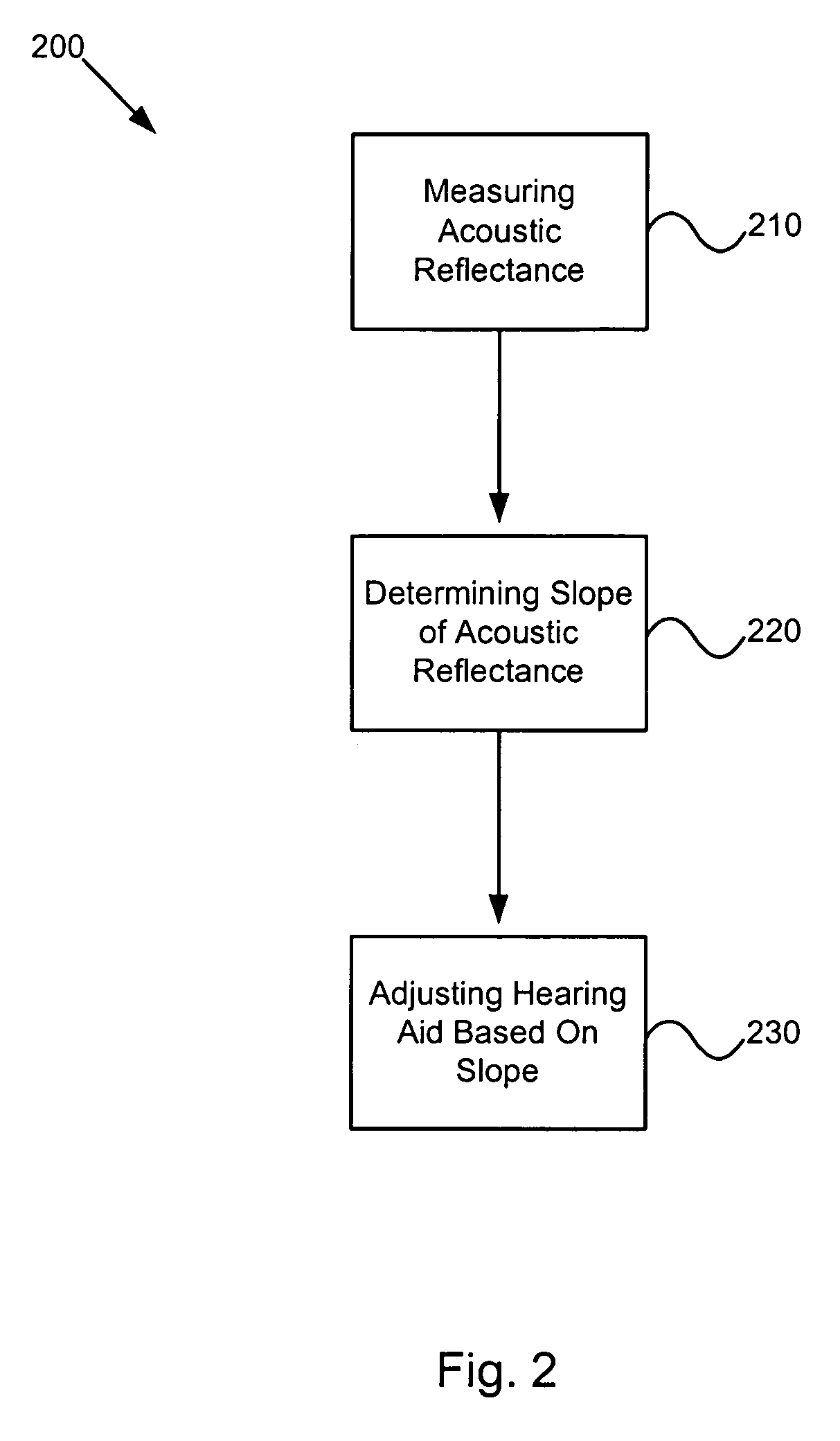System and method for automatically adjusting hearing aid based on acoustic reflectance
a technology of acoustic reflectance and automatic adjustment, applied in the field of acoustic devices, can solve the problems of significantly increasing the cost of hearing aids, whose time spent on the fitting process is a significant cost associated with hearing aids, etc., and achieves the effect of improving the quality of average patient fitting, reducing the variance of hearing aid fitting, and improving the quality of hearing aid fitting
- Summary
- Abstract
- Description
- Claims
- Application Information
AI Technical Summary
Benefits of technology
Problems solved by technology
Method used
Image
Examples
Embodiment Construction
[0029] The present invention relates generally to acoustic devices. More specifically, the invention provides a method and system for automatically adjusting acoustic devices based on acoustic reflectance. For example, the acoustic reflectance is a relationship between reflected waves and incident waves. Merely by way of example, the invention has been applied to hearing aids, but it would be recognized that the invention has a much broader range of applicability.
[0030] The fitting of conventional hearing aids is a complicated process. For example, the fitting personnel needs to perform a detailed analysis of middle ear and cochlear loss configuration. This analysis is made more difficult by the presence of standing waves in the ear canal due to reflection from the middle and / or inner ears. For example, such analysis may require an acoustic power assessment, which in turn includes detailed acoustic impedance measurements and analyses of both the hearing aid and of the ear canal. Wh...
PUM
 Login to View More
Login to View More Abstract
Description
Claims
Application Information
 Login to View More
Login to View More - R&D
- Intellectual Property
- Life Sciences
- Materials
- Tech Scout
- Unparalleled Data Quality
- Higher Quality Content
- 60% Fewer Hallucinations
Browse by: Latest US Patents, China's latest patents, Technical Efficacy Thesaurus, Application Domain, Technology Topic, Popular Technical Reports.
© 2025 PatSnap. All rights reserved.Legal|Privacy policy|Modern Slavery Act Transparency Statement|Sitemap|About US| Contact US: help@patsnap.com



